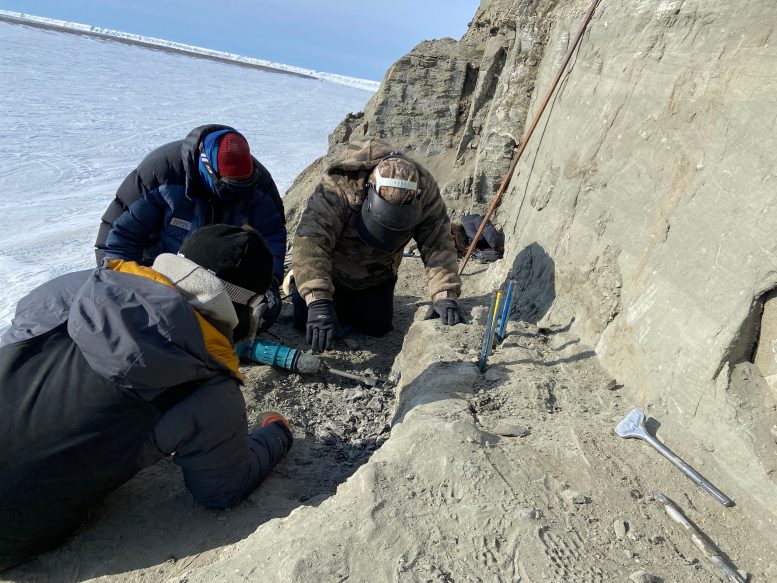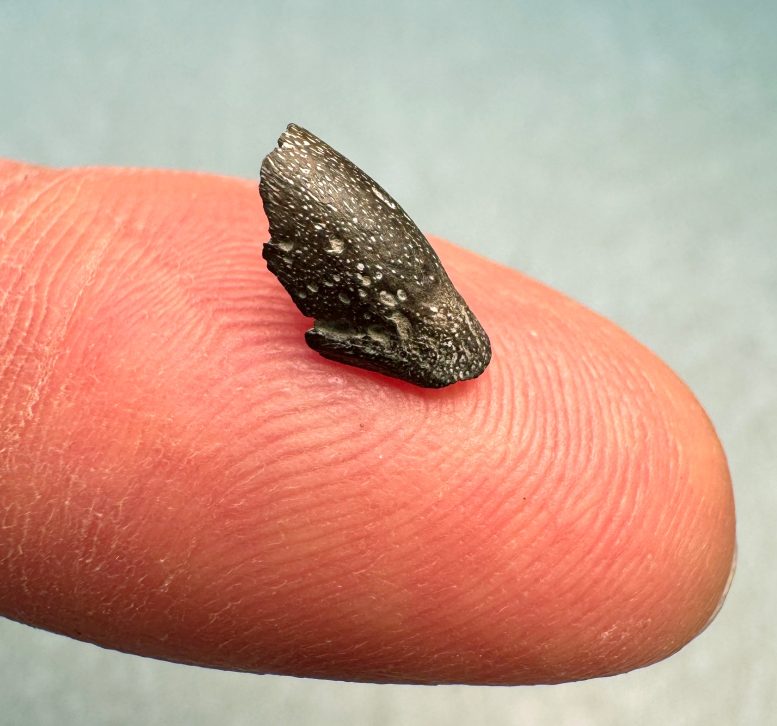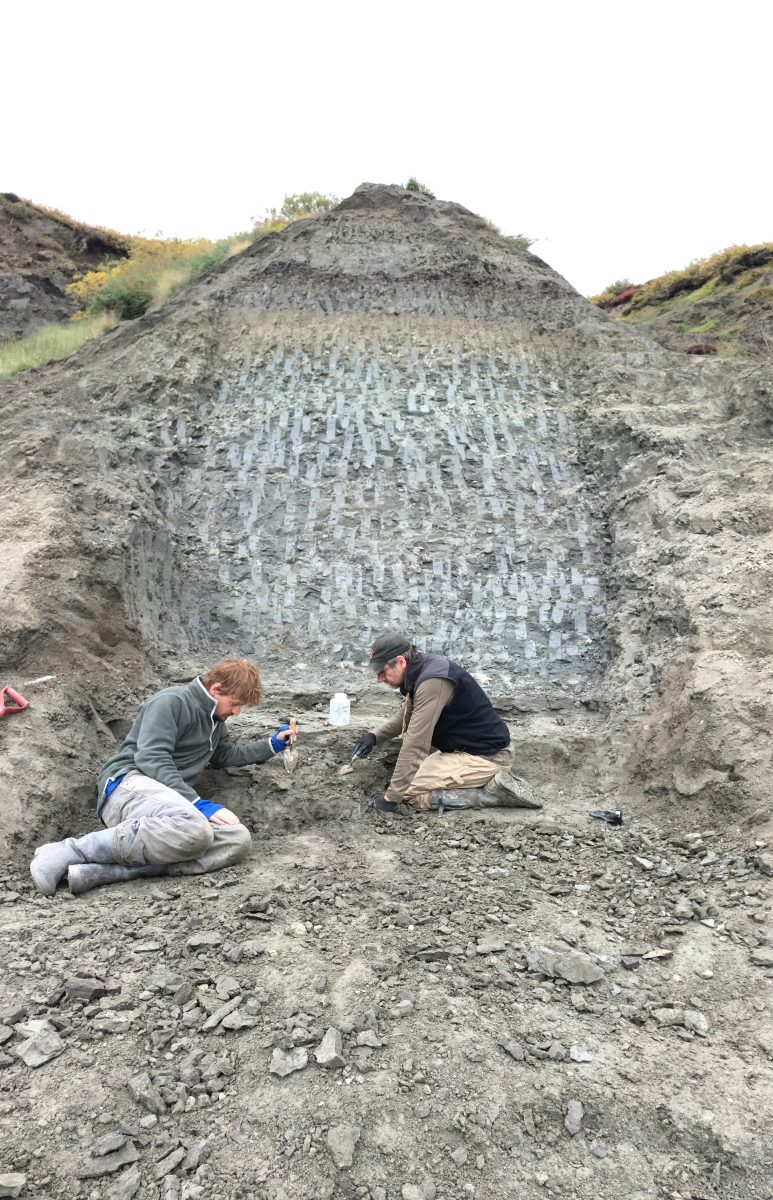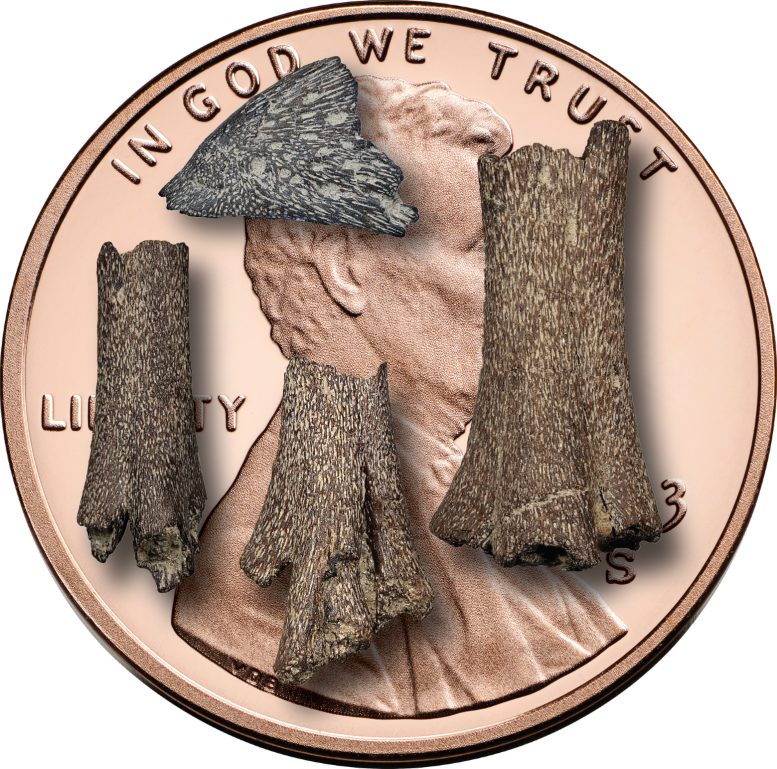
The paper documents the earliest known evidence of birds nesting in polar regions.
Each spring, the Arctic comes alive with the sounds of chirping and the arrival of fluffy hatchlings, as millions of birds gather to raise their young.
According to a new study featured on the cover of the journal Science, the same was true 73 million years ago. The paper presents the earliest known evidence of birds nesting in polar regions.

“Birds have existed for 150 million years,” said lead author Lauren Wilson, a doctoral student at Princeton University who earned her master’s degree at the University of Alaska Fairbanks. “For half of the time they have existed, they have been nesting in the Arctic.”
Fossil evidence reveals early Arctic breeders
The paper is based on Wilson’s master’s thesis research at the University of Alaska Fairbanks. By examining dozens of tiny fossilized bones and teeth from an excavation site in Alaska, she and her colleagues identified several types of birds that were breeding in the Arctic during the time of the dinosaurs.
These included diving birds similar to loons, gull-like birds, and various species resembling modern ducks and geese.

A new record in polar bird reproduction
Before this study, the earliest known evidence of birds reproducing in the Arctic or Antarctic dated to about 47 million years ago, long after an asteroid wiped out 75 percent of Earth’s animal species.
“This pushes back the record of birds breeding in the polar regions by 25 to 30 million years,” said Pat Druckenmiller, the paper’s senior author, director of the University of Alaska Museum of the North and Wilson’s advisor for her master’s degree work. The bird fossils are part of the museum’s collections.
“The Arctic is considered the nursery for modern birds,” he said. “It’s kind of cool when you go to Creamer’s Field [a Fairbanks-area stopover for migrating geese, ducks, and cranes], to know that they have been doing this for 73 million years.”
Members of the research team remove a chunk of frozen material from the bone layer during a winter field expedition on the Colville River. They take the material back to the lab to find and study the fossils. Credit: Lauren Wilson
Ancient bones show remarkable preservation
The mere existence of the large collection of ancient bird fossils is remarkable, Wilson said, given how delicate bird bones are. That is doubly true for baby bird bones, which are porous and easily destroyed.
“Finding bird bones from the Cretaceous is already a very rare thing,” she said. “To find baby bird bones is almost unheard of. That is why these fossils are significant.”

Alaska’s North Slope yields rare discoveries
The fossils were collected from the Prince Creek Formation, an area along the Colville River on Alaska’s North Slope known for its dinosaur fossils. Scientists identified more than 50 bird bones and bone fragments.
“We put Alaska on the map for fossil birds,” Druckenmiller said. “It wasn’t on anyone’s radar.”
The collection is a testament to the value of an uncommon excavation and research approach at the Prince Creek Formation. Much of vertebrate paleontology focuses on recovering large bones.
The scientists who work in the Prince Creek Formation make sure to get every bone and tooth they can, from the visible to the microscopic, Druckenmiller said. The technique, which involves hauling tubs of screened sediment back to the lab for examination under a microscope, has yielded numerous new species and unprecedented insights into the behavior and physiology of the dinosaurs, birds, and mammals that lived in the Arctic during the Cretaceous Period.

“We are now one of the best places in the nation for bird fossils from the age of the dinosaurs,” Druckenmiller said. “In terms of information content, these little bones and teeth are fascinating and provide an incredible depth of understanding of the animals of this time.”
Could these be the oldest modern birds?
It remains to be seen whether the bones found on the Colville River are the earliest-known members of Neornithes, the group that includes all modern birds. Some of the new bones have skeletal features only found in this group. And, like modern birds, some of these birds had no true teeth.
“If they are part of the modern bird group, they would be the oldest such fossils ever found,” Druckenmiller said. Currently, the oldest such fossils are from about 69 million years ago. “But it would take us finding a partial or full skeleton to say for sure.”
Reference: “Arctic bird nesting traces back to the Cretaceous” by Lauren N. Wilson, Daniel T. Ksepka, John P. Wilson, Jacob D. Gardner, Gregory M. Erickson, Donald Brinkman, Caleb M. Brown, Jaelyn J. Eberle, Chris L. Organ and Patrick S. Druckenmiller, 29 May 2025, Science.
DOI: 10.1126/science.adt5189
Funding: U.S. National Science Foundation, U.S. National Science Foundation, U.S. National Science Foundation, U.S. National Science Foundation, Alaska EPSCoR, Otto William Geist Fund, Winifred Goldring Award
Never miss a breakthrough: Join the SciTechDaily newsletter.